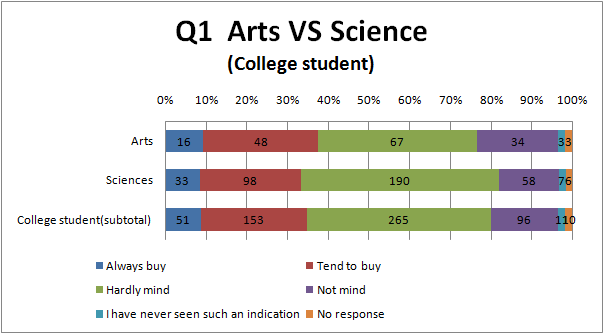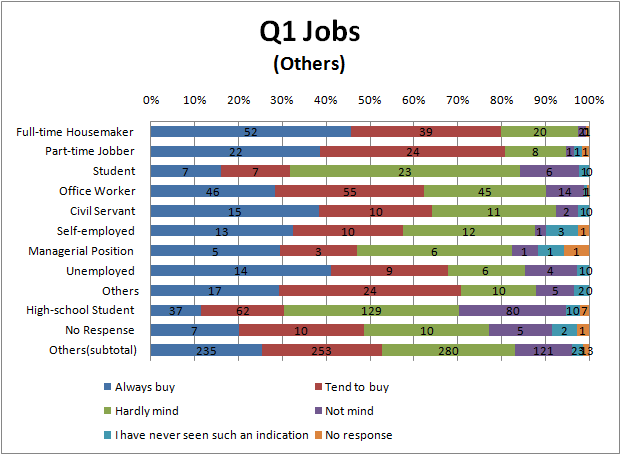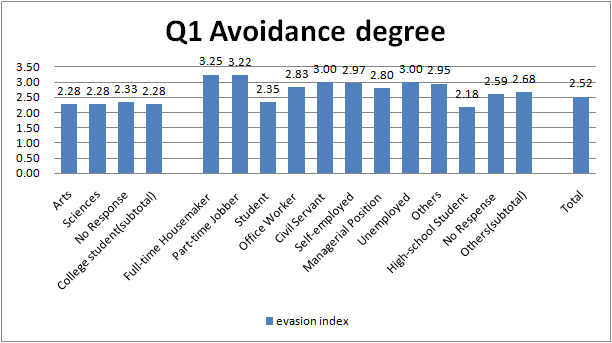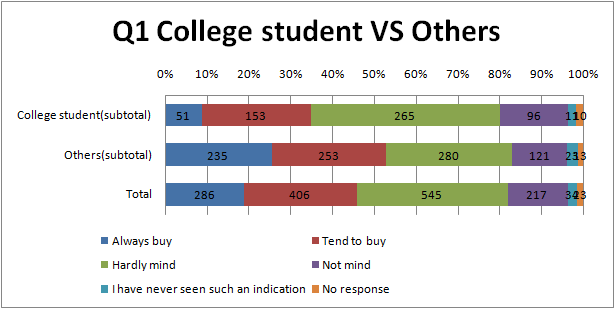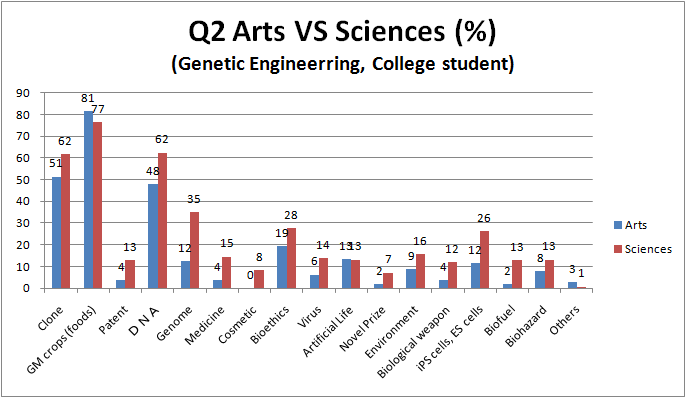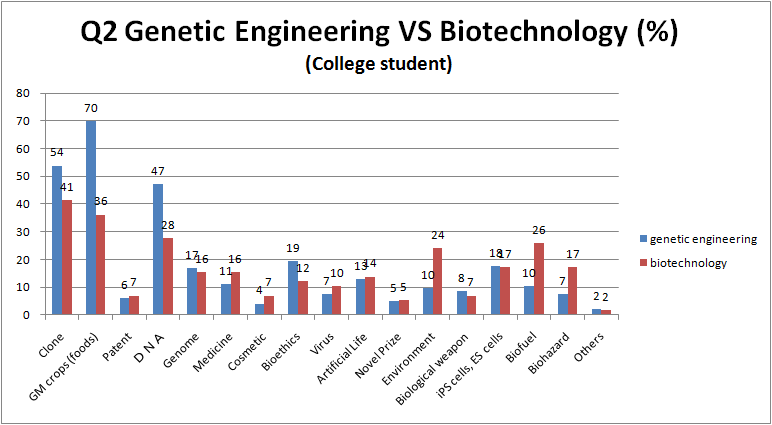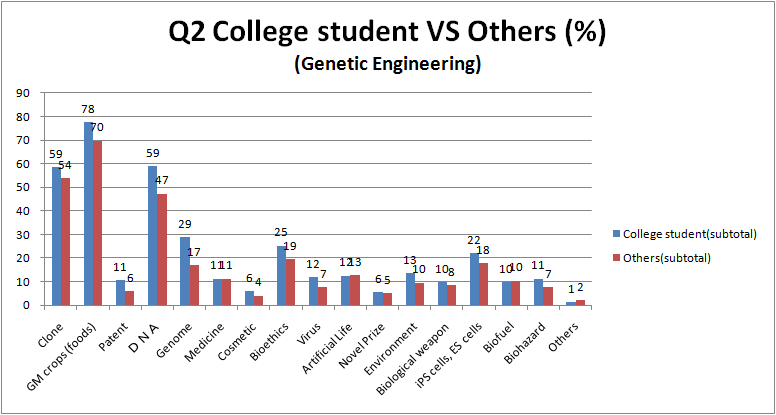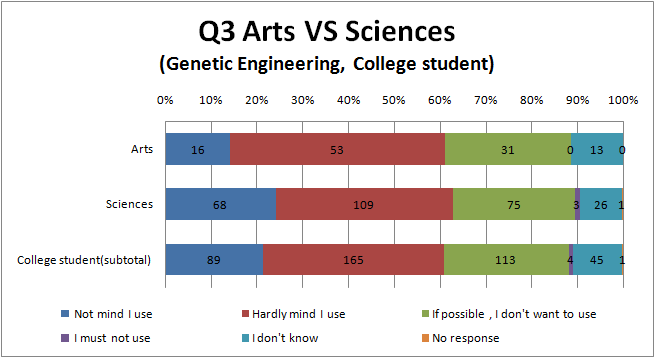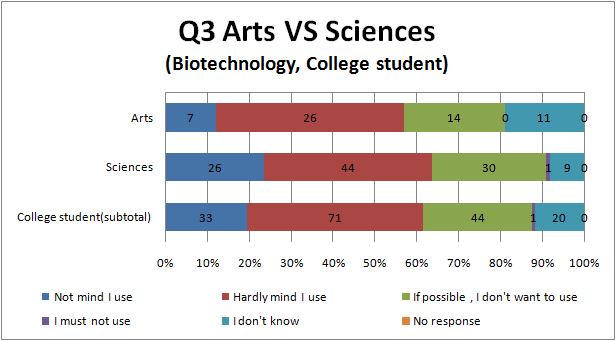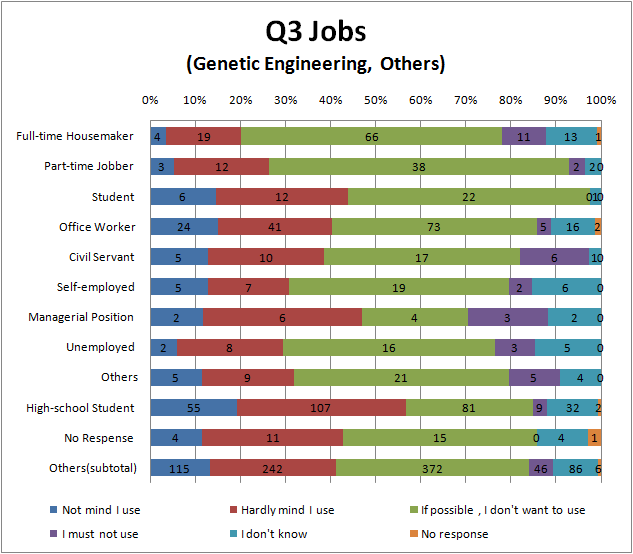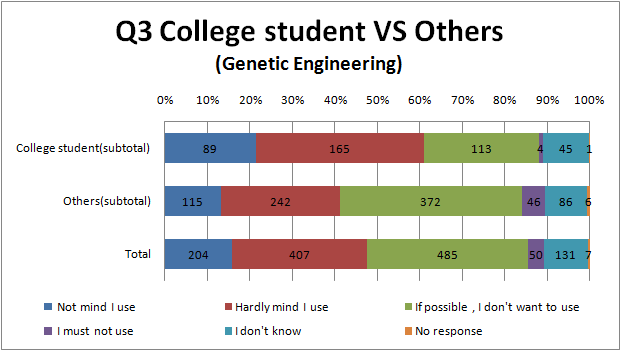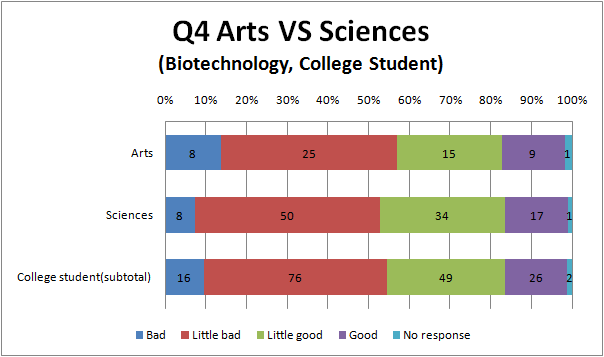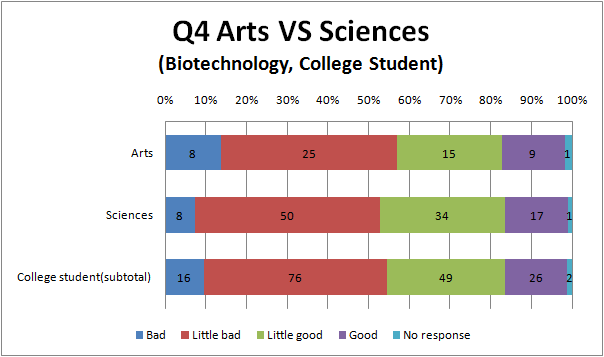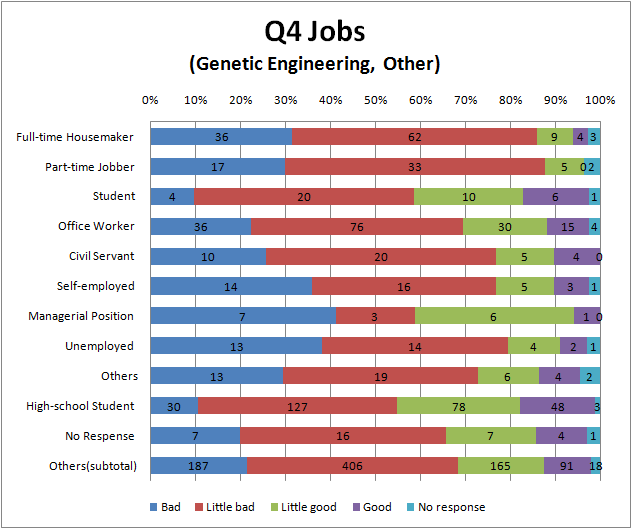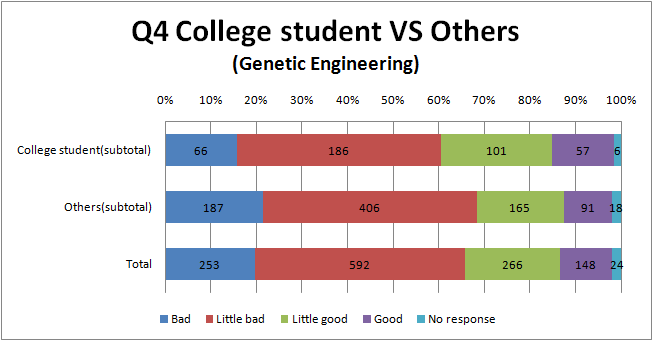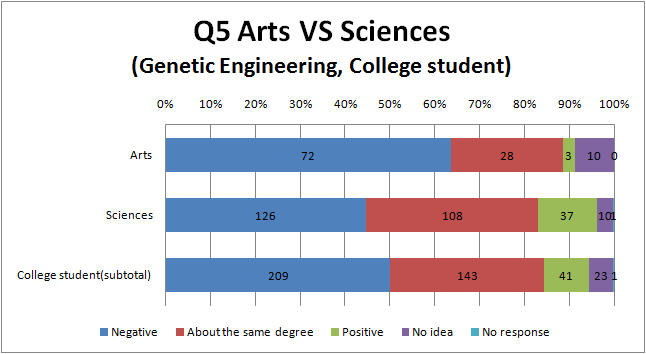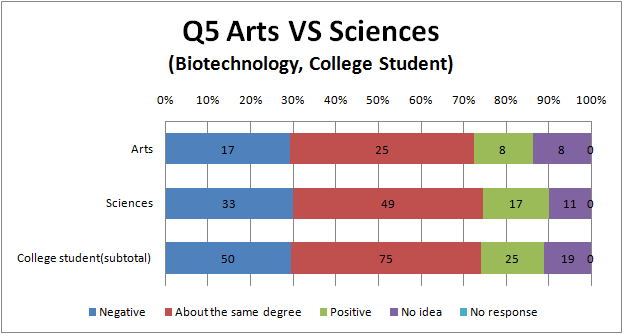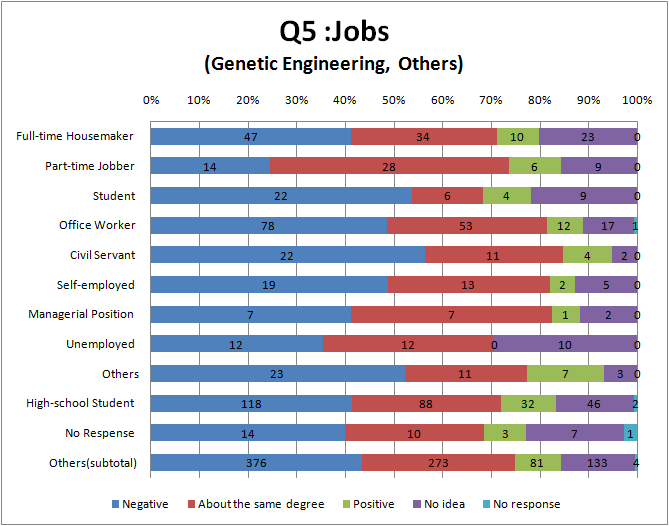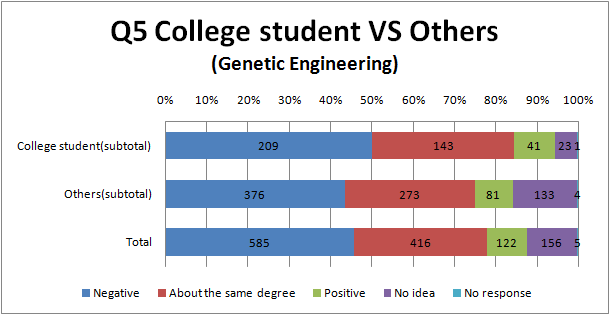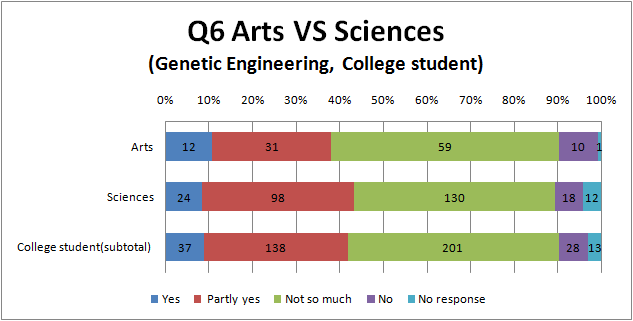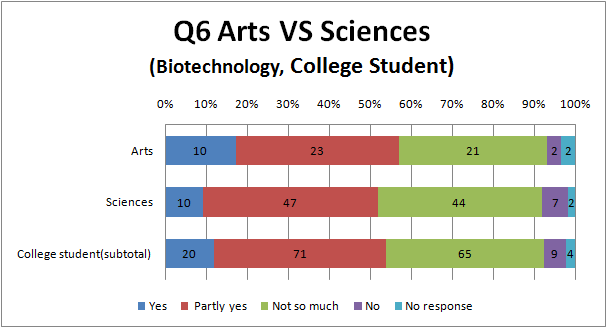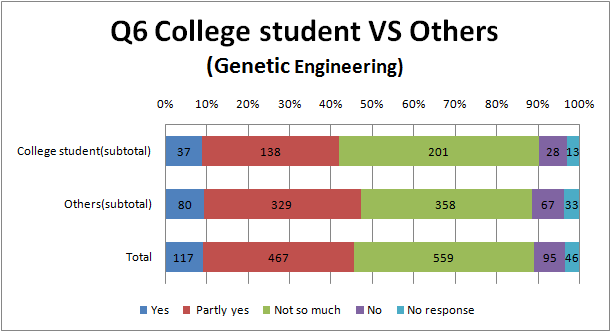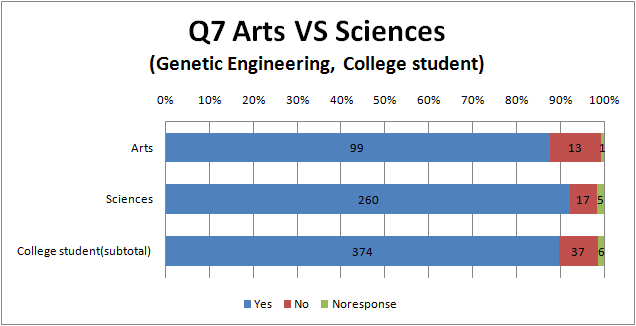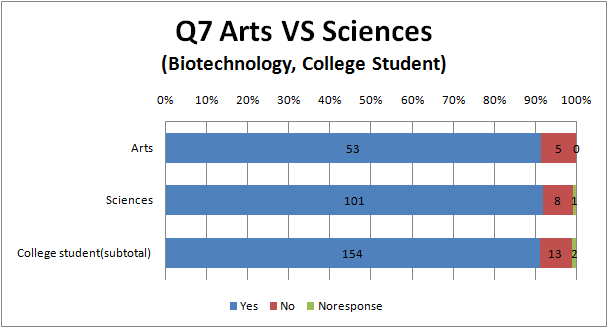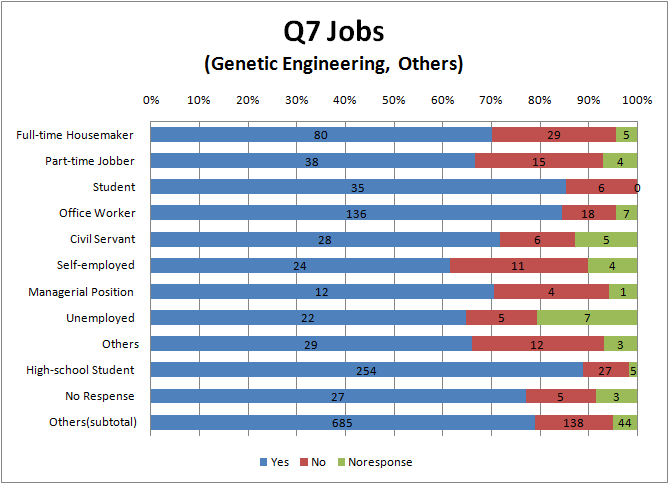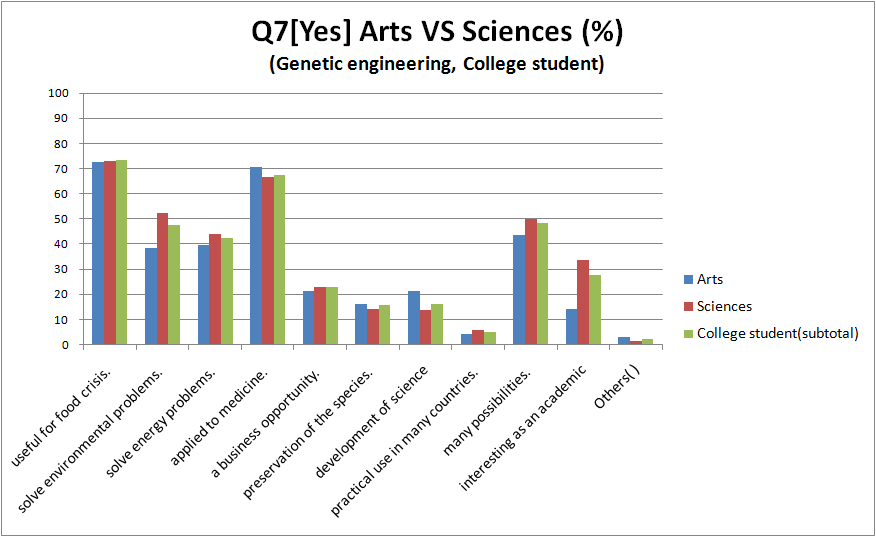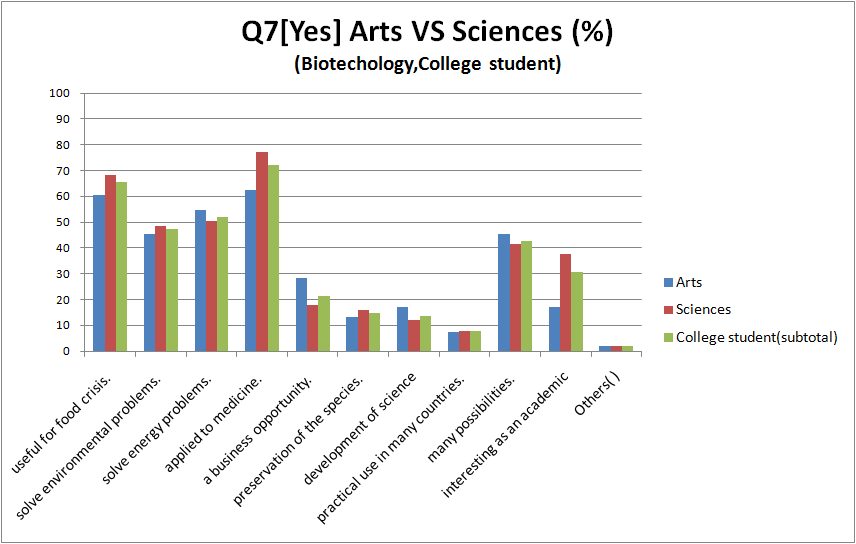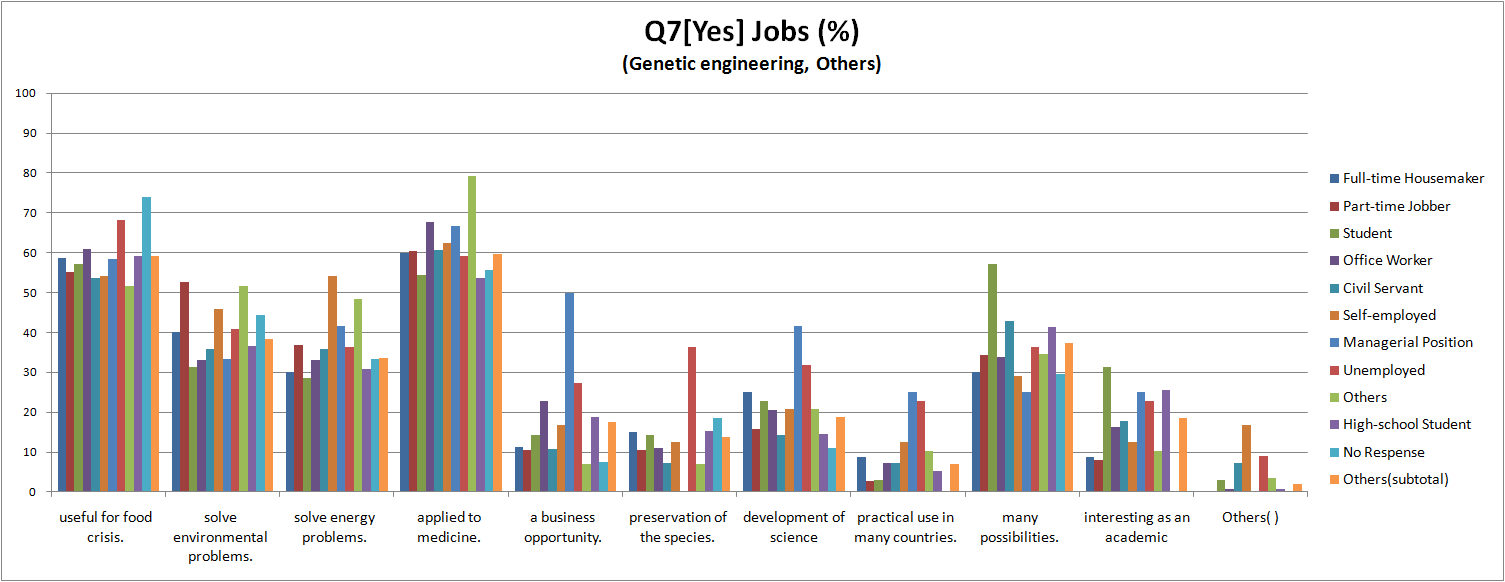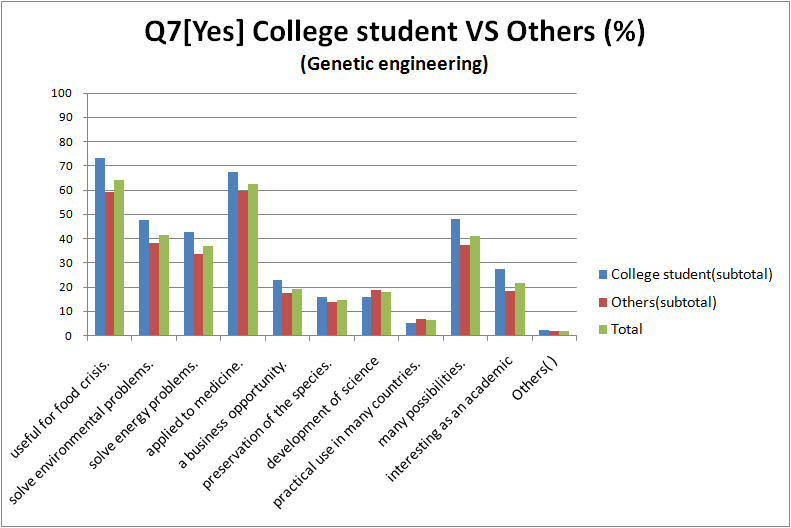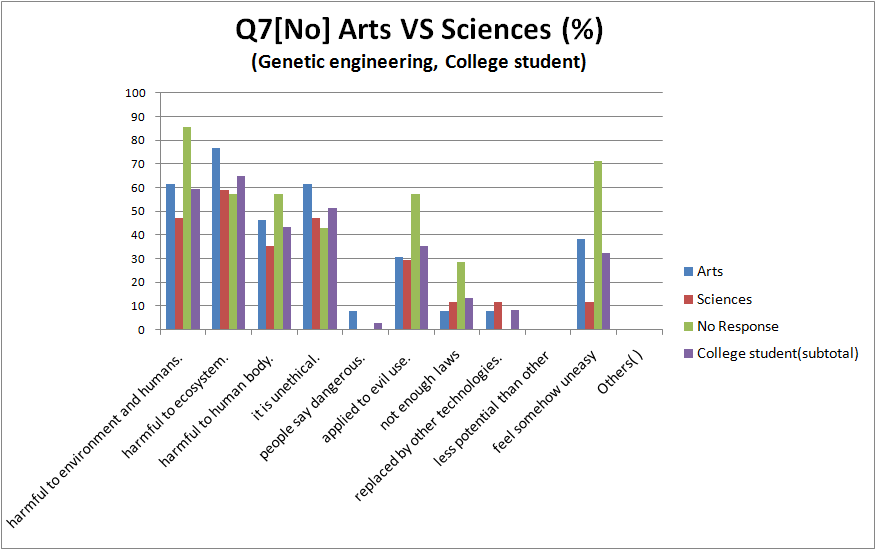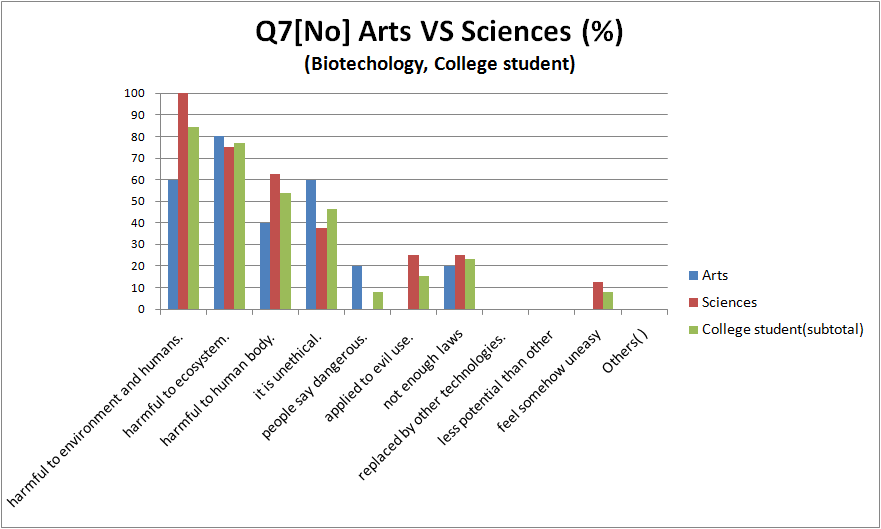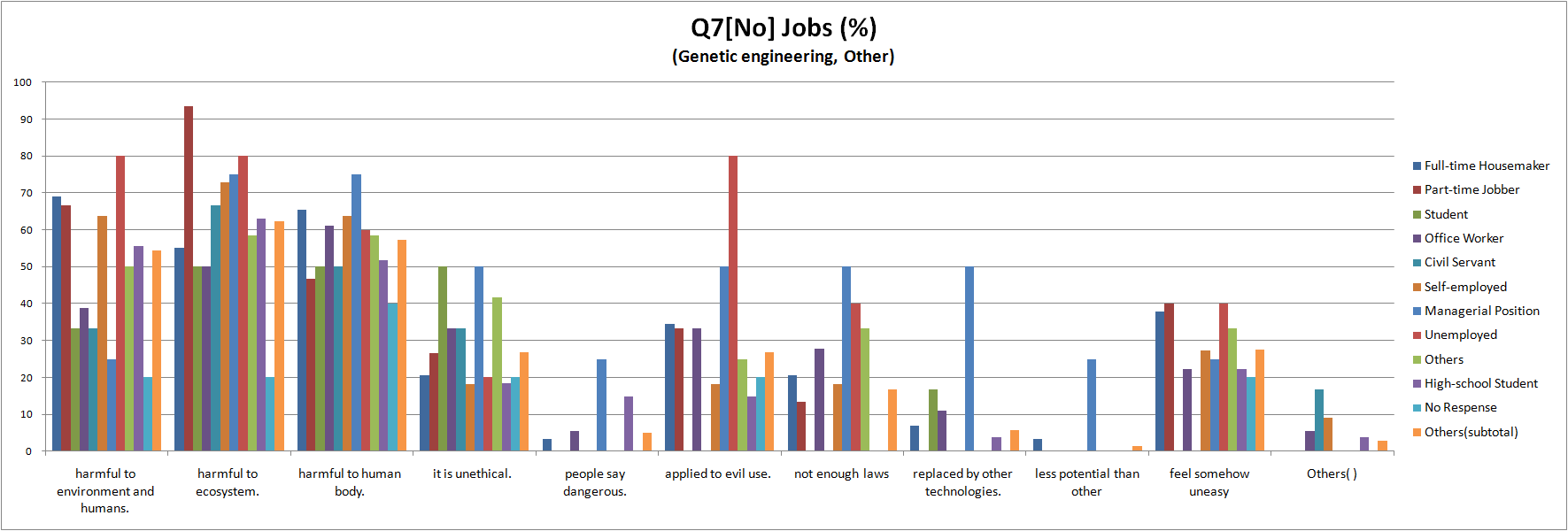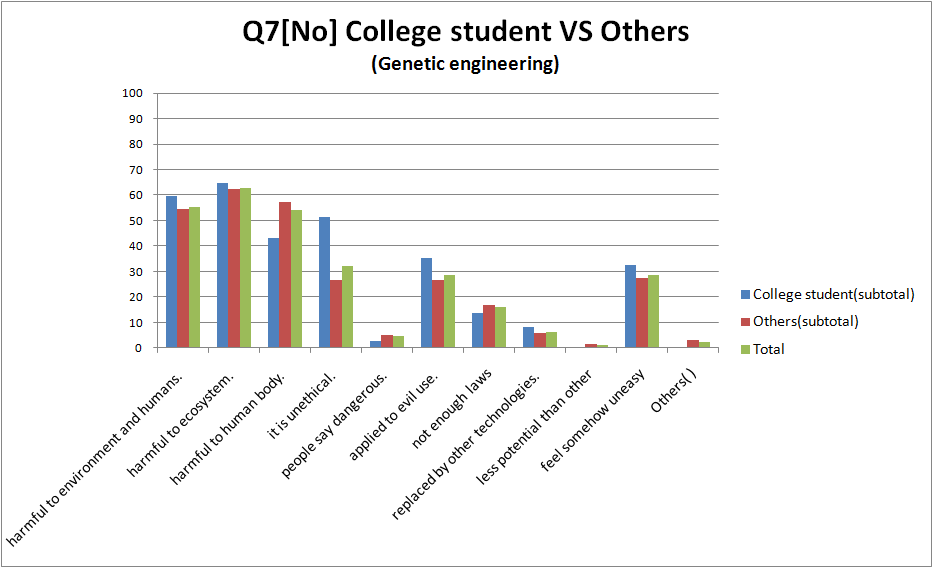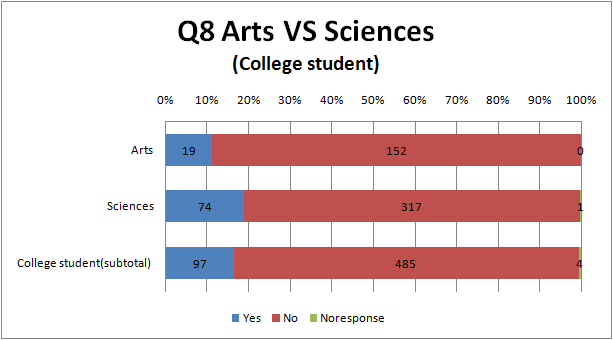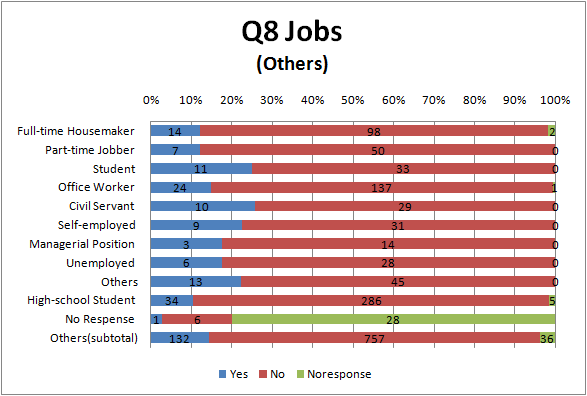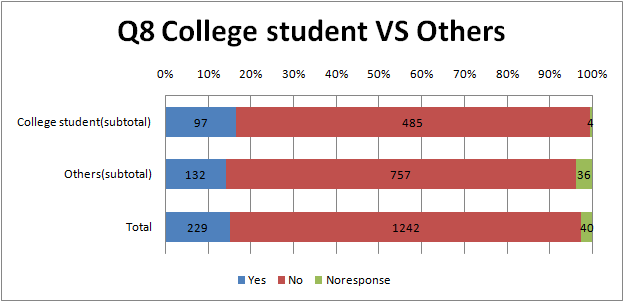Team:Tokyo Metropolitan/Human Practice
From 2010.igem.org
(→5. Which trend of information about ( genetic engineering or biotechnology ) is major, negative or positive?) |
|||
| Line 1: | Line 1: | ||
| - | + | {{:Team:Tokyo_Metropolitan/Human_Practice/Header}} | |
| - | + | ||
| - | + | ||
| - | + | ||
| - | + | ||
| - | + | ||
| - | + | ||
| - | + | ||
| - | + | ||
| - | + | ||
| - | + | ||
| - | + | ||
| - | + | ||
| - | + | ||
| - | + | ||
| - | + | ||
| - | + | ||
| - | + | ||
| - | + | ||
| - | + | ||
| - | + | ||
| - | + | ||
| - | + | ||
| - | + | ||
| - | + | ||
| - | + | ||
| - | + | ||
| - | + | ||
| - | + | ||
| - | + | ||
| - | + | ||
| - | + | ||
| - | + | ||
| - | + | ||
| - | + | ||
| - | + | ||
| - | + | ||
| - | + | ||
| - | + | ||
| - | + | ||
| - | + | ||
| - | + | ||
| - | + | ||
| - | + | ||
| - | + | ||
| - | + | ||
| - | + | ||
| - | + | ||
| - | + | ||
| - | + | ||
| - | + | ||
| - | + | ||
| - | + | ||
| - | + | ||
| - | + | ||
| - | + | ||
| - | + | ||
| - | + | ||
| - | + | ||
| - | + | ||
| - | + | ||
| - | + | ||
| - | + | ||
| - | + | ||
| - | + | ||
| - | + | ||
| - | + | ||
| - | + | ||
| - | + | ||
| - | + | ||
| - | + | ||
| - | + | ||
| - | + | ||
| - | + | ||
| - | + | ||
| - | + | ||
| - | + | ||
| - | + | ||
| - | + | ||
| - | + | ||
| - | + | ||
| - | + | ||
| - | + | ||
| - | + | ||
| - | + | ||
| - | + | ||
| - | + | ||
| - | + | ||
| - | + | ||
| - | + | ||
| - | + | ||
| - | + | ||
| - | + | ||
| - | + | ||
| - | + | ||
| - | + | ||
| - | + | ||
| - | + | ||
| - | + | ||
| - | + | ||
| - | + | ||
| - | + | ||
| - | + | ||
| - | + | ||
| - | + | ||
| - | + | ||
| - | + | ||
| - | + | ||
| - | + | ||
| - | + | ||
| - | + | ||
| - | + | ||
| - | + | ||
| - | + | ||
| - | + | ||
| - | + | ||
| - | + | ||
| - | + | ||
| - | + | ||
| - | + | ||
| - | + | ||
| - | + | ||
| - | + | ||
| - | + | ||
| - | + | ||
| - | + | ||
| - | + | ||
| - | + | ||
| - | + | ||
| - | + | ||
| - | + | ||
| - | + | ||
| - | + | ||
| - | + | ||
| - | + | ||
| - | + | ||
| - | + | ||
| - | + | ||
| - | + | ||
| - | + | ||
| - | + | ||
| - | + | ||
| - | + | ||
| - | + | ||
==Introduction== | ==Introduction== | ||
Revision as of 06:19, 27 October 2010

Introduction
This year, we iGEM Japan carried out ”iGEM Japan Human Practice” suggested by iGEM Kyoto. In this project, we drove an attitude survey on genetic engineering and biotechnology cooperating with one another. We attempted to recognize the current situation, and we will take advantage of this result for future human practice activities.
Motivation
According to previous teams' results of human practice activity, which was a survey with questions about genetic engineering, more Japanese people chose "negative" or "neutral" than the other nationalities [1]. In addition, it is often said that many Japanese people hate or avoid genetically modified food [2]. We are interested in this tendency. Thus, we attempted to indicate the reason why many Japanese people have a negative impression on genetic engineering. We made a questionnaire below, asking about the impressions on genetic engineering and words related to iGEM, or Synthetic biology.
Advantages
- By cooperating with several teams to share some steps of human practice activities, we can not only reduce the burden but also improve the quality of the survey result with rich amount of samples.
- We can lead more attention from mass-media by driving this activity as iGEM Japan, than as one university team. This will be a great help for many purposes, such as announcing the activities of iGEM, inviting sponsors, or further human practice activities.
- This project will be a good opportunity to deepen the relationships between each Japanese iGEMers. Actually, we are planning iGEM JAPAN project, which includes not only human practice activities but also construction of iGEM JAPAN Website, PR by magazines and participation in symposiums for example.
[ This is common Introduction article of participating universities of “iGEM Japan Human Practice”(KIT-Kyoto, Kyoto, Osaka, Tokyo_Metropolitan, and UT-Tokyo). iGEM Kyoto has the responsibility for the wording. ]
Methods
Five out of the nine Japanese teams, KIT-Kyoto, Kyoto, Osaka, Tokyo_Metropolitan, and UT-Tokyo took part in this project. We all used paper-based questionnaire, but the places and terms are different depending on teams.
We conducted a survey from June 30 to September 26 in the places near the universities.
Targets, Terms, and Places
KIT-Kyoto
- Students
- July 12 - September 26 at Kyoto Institute of Technology University
- Others
- August 10 at Open Campus in Kyoto Institute of Technology University
Kyoto
- Students
- July 12 - September 26 at Kyoto University
- Others
- August 28, 29 at Masukata Shopping Street, Kyoto
- September 4 at Grace Tanaka, a supermarket, Kyoto
- September 11, 12 at Coop Shimogamo, Kyoto
Osaka
- Others
- August 10 at Osaka University from high school student or their parents
Tokyo_Metropolitan
- Students
- July 1 - September 26 at Tokyo Metropolitan University
- July 30 - September 26 (Tokyo_Metropolitan team member’s friends)
- Others
- June 30 - July 2 in [http://www.bio-expo.jp/en/Home/ BIO EXPO JAPAN] at Tokyo
- July 16 in Public Forum on Education Development Project at Tokyo Metropolitan University
- July 18, August 20 in Open Lab at Tokyo Metropolitan University
- September 18, 19 in Mitaka Science and Technology Fair at Tokyo
- August 7 - September 26 (Tokyo_Metropolitan team member's family and acquaintances)
UT-Tokyo
- Others (High School Students)
- July 31 at SEG, a cram school, Tokyo
Questionnaire
We made 2 similar kinds of questionnaire. One is "Attitude survey of genetic engineering" and the other is "Attitude survey of biotechnology." They are almost the same, but "Attitude survey of biotechnology" has a little different question from "Attitude survey of genetic engineering". We only changed the word "genetic engineering" of the survey for "biotechnology" in order to make "Attitude survey of biotechnology."
And we attempted to indicate difference of image between "genetic engineering" and "biotechnology".
Attitude survey of [ genetic engineering / biotechnology ]
- When shopping, do you buy "not genetically modified food”?
- [ Always buy / Tend to buy / Hardly mind / Not mind / I have never seen such an indication ]
- What do you associate with [ genetic engineering / biotechnology ]? (※Please circle all that apply)
- [ Clone / GM crops (foods) / Patent / DNA / Genome / Medicine / Cosmetic / Bioethics / Virus / Artificial Life / Novel Prize / Environment / Biological weapon / iPS cells, ES cells / Biofuel / Biohazard / Others( ) ]
- If there is no difference in effect, what do you think about using the drugs manufactured by [ genetic engineering / biotechnology ]?
- [ Not mind I use / Hardly mind I use / If possible, I don't want to use / I must not use / I don't know ]
- What do you think of the artificial genetic mutation?
- [ Bad / Little bad / Little good / Good ]
- Which trend of information about [ genetic engineering / biotechnology ] is major, negative or positive?
- [ Negative / About the same degree / Positive / No idea ]
- Do you think Japan actively tackles [ genetic engineering / biotechnology ]?
- [ Yes / Partly yes / Not so much / No ]
- Do you think the research on [ genetic engineering / biotechnology ] should continue?
- [ Yes / No ]
- If you answered [Yes], please circle every fit reason from below.
- Because it may be useful for food crisis.
- Because it may solve environmental problems.
- Because it may solve energy problems.
- Because it may be applied to medicine.
- Because it may be a new business.
- Because it can use preservation of the species.
- Because it symbolizes the development of science and technology.
- Because it has already been put to practical use in many countries.
- Because it has potential.
- Because it is interesting as academic.
- Others( )
- If you answered [No], please circle every reason from below.
- Because it can create evil things harmful to environment and humans.
- Because products of it can be harmful to ecosystem.
- Because products of it can be harmful to human body.
- Because I can't approve it ethically.
- Because people say it is dangerous.
- Because it can be applied to evil use.
- Because there are not enough laws governing it.
- Because it can be replaced by other technologies.
- Because it seems to have less potential than other technologies.
- Because I feel somehow uneasy.
- Have you ever heard the word, "Synthetic biology"? [ YES / NO ]
[ This is the common Method article of participating universities of “iGEM Japan Human Practice”(KIT-Kyoto, Kyoto, Osaka, Tokyo_Metropolitan, and UT-Tokyo).iGEM Kyoto has the responsibility for the wording. ]
Results
We drove this survey from July to September 26th.
All data: HumanPractice.xls
Our result is too much to write all on this page. So we write only graphs on this page and upload all result data. We analyzed mainly following points.
- compare between arts and science(*) in college student
- compare with "genetic engineering" and "biotechnology"
- compare in job
- compare between college student and the other
(*)In Japan, classification of arts and science is important. Most Japanese students study different subjects since high school due to the classification, because it is a big factor to decide the subjects required in the entrance examination for universities or colleges. This is the reason we predicted that there might be some differences between arts and science.
Scale
Following is the scale of our survey(whole iGEM Japan.)
| College Student | ||||
| No. | Arts or Science | Genetic Engineering | Biotechnology | Subtotal |
|---|---|---|---|---|
| 1 | Arts | 113 | 58 | 171 |
| 2 | Science | 282 | 110 | 392 |
| 0 | No response | 23 | 1 | 24 |
| - | Total | 418 | 169 | 587 |
| Other | ||||
| No. | Job | Genetic Engineering | Biotechnology | Subtotal |
|---|---|---|---|---|
| 1 | Full-time House maker | 114 | 0 | 114 |
| 2 | Part-time Jobber | 57 | 0 | 57 |
| 3 | Student | 41 | 3 | 44 |
| 4 | Office Worker | 161 | 1 | 162 |
| 5 | Civil Servant | 39 | 0 | 39 |
| 6 | Self-employed | 39 | 1 | 40 |
| 7 | Managerial Position | 17 | 0 | 17 |
| 8 | Unemployed | 34 | 0 | 34 |
| 9 | Other | 44 | 14 | 58 |
| 10 | High-school Student | 286 | 39 | 325 |
| 0 | No Response | 35 | 0 | 35 |
| - | Subtotal | 866 | 58 | 924 |
| - | Total | 1284 | 227 | 1511 |
| Male | 771 |
| Female | 702 |
| No Response | 38 |
| Total | 1511 |
Graph
1. When shopping, do you buy "not genetically modified food”?
- [ Always buy / Tend to buy / Hardly mind / Not mind / I have never seen such an indication ]
2. What do you associate with ( genetic engineering or biotechnology )? (※Please circle all that apply)
- [ Clone / GM crops (foods) / Patent / DNA / Genome / Medicine / Cosmetic / Bioethics / Virus / Artificial Life / Novel Prize / Environment / Biological weapon / iPS cells, ES cells / Biofuel / Biohazard / Others( ) ]
3. If there is no difference in effectiveness, what do you think about using the drugs manufactured by ( genetic engineering or biotechnology )?
- [ Not mind I use / Hardly mind I use / If possible, I don't want to use / I must not use / I don't know ]
4. What do you think of the artificial genetic mutation by ( genetic engineering or biotechnology )?
- [ Bad / Little bad / Little good / Good ]
5. Which trend of information about ( genetic engineering or biotechnology ) is major, negative or positive?
- [ Negative / About the same degree / Positive / No idea ]
6. Do you think Japan actively tackles on ( genetic engineering or biotechnology )?
- [ Yes / Partly yes / Not so much / No ]
7 Do you think the research on ( genetic engineering or biotechnology ) should continue?
- [ Yes / No ]
- If you answered [Yes], please circle every fit reason from below.
- Because it may be useful for food crisis.
- Because it may solve environmental problems.
- Because it may solve energy problems.
- Because it may be applied to medicine.
- Because it may be a new business.
- Because it can use preservation of the species.
- Because it symbolizes the development of science and technology.
- Because it has already been put to practical use in many countries.
- Because it has potential.
- Because it is interesting as academic.
- Others( )
- If you answered [No], please circle every reason from below.
- Because it can create evil things harmful to environment and humans.
- Because products of it can be harmful to ecosystem.
- Because products of it can be harmful to human body.
- Because I can't approve it ethically.
- Because people say it is dangerous.
- Because it can be applied to evil use.
- Because there are not enough laws governing it.
- Because it can be replaced by other technologies.
- Because it seems to have less potential than other technologies.
- Because I feel somehow uneasy.
8. Have you ever heard the word, "Synthetic biology"?
- [ YES / NO ]
[ This is common Result article of participating universities of “iGEM Japan Human Practice”(KIT-Kyoto, Kyoto, Osaka, Tokyo_Metropolitan, and UT-Tokyo).iGEM Kyoto has the responsibility for the wording. ]
Discussion
Q1, When shopping, do you buy "not genetically modified food”?
[ Always buy / Tend to buy / Hardly mind / Not mind / I have never seen such an indication ]
More adults avoid “genetically modified food” than students. Especially, we think, full-time house makers have a lot of interest in food safety because they go shopping and buy foods nearly every day.Mean while, students worrier about the price than about the safety. And they are from different generations. Students today have studied about “genetic engineering” before.
Q2,What do you associate with [ genetic engineering / biotechnology ]? (※Please circle all that apply)
[ Clone / GM crops (foods) / Patent / DNA / Genome / Medicine / Cosmetic / Bioethics / Virus / Artificial Life / Novel Prize / Environment / Biological weapon / iPS cells, ES cells / Biofuel / Biohazard / Others( ) ]
The top three are ”Clone”, “GM crops(foods)” ,”DNA” in any jobs. “Genome” is lower than we thought. Include “iPS cells, ES cells”, these are academic language. So these are little understood popular expect students in sciences. Among students in arts, there are remarkably few people who think that “genetic engineering” or “biotechnology” is associated with closer to their lives, for example, medicine and cosmetic. In others (not students), they don’t know academic language well, but they know it is associated with their lives.
Q3,If there is no difference in effect, what do you think about using the drugs manufactured by [ genetic engineering / biotechnology ]?
[ Not mind I use / Hardly mind I use / If possible, I don't want to use / I must not use / I don't know ]
Q1 and Q3 show the same tendency. Adults think to avoid using it.
Q4,What do you think of the artificial genetic mutation?
[ Bad / Little bad / Little good / Good ]
There is not much difference between answers on genetic engineering and biotechnology. And students today don’t have a bad impression of genetic engineering. From as far back as they can remember, these technologies have used.
Q5,Which trend of information about [ genetic engineering / biotechnology ] is major, negative or positive?
[ Negative / About the same degree / Positive / No idea ]
The answers on genetic engineering are more negative than biotechnology. We think that there is an effect of mass media. They have established a public image of genetic engineering is not good.
Q6,Do you think Japan actively tackles [ genetic engineering / biotechnology ]?
[ Yes / Partly yes / Not so much / No ]
There is not much difference between students and others. We must do actively to popularize genetic engineering and biotechnology because of the answers are half “Yes” and half “No”
Q7,Do you think the research on [ genetic engineering / biotechnology ] should continue?
[ Yes / No ]
Many respondents answered they think the research on genetic engineering or biotechnology should continue!! The image of genetic engineering is not good ( Q1, 3 ), but more than 80% of all respondents recommend the research. We think, this means it is depending on what research.
<the research should continue>
Students in science think it is interesting as academic. Managerial Position anticipate a new business , literally. Overall, they anticipate “be useful for food crisis”, “be applied to medicine”, “potential”.
<the research should not continue> There is not much difference between answers on genetic engineering and biotechnology. Most of them are concerned about effect of genetic engineering or biotechnology on environment and humans. Students in arts feel somehow uneasy. We think it can improve by awareness activities.
Q8,Have you ever heard the word, "Synthetic biology"?
[ YES / NO ]
There is not much difference between students and others. Overall, person who knows “Synthetic Biology” is few (10~20% of all respondents). So, we need activities to convey this.
Conclusion
We take the view that genetic engineering is not good impression by ordinary Japanese (expect students) from the questionnaire result. So, we had some activities to improve this.
・@Science café(at University of Tokyo) May 29, 30
Some of iGEM Japan team( UT-Tokyo, Kyoto, Osaka ) had the Science café.We could talk to let people know Synthetic biology and iGEM!
・@[http://www.bio-expo.jp/en/Technical-Conference/ International Biotechnology Academic Conference](at Tokyo) June 30 - July 2
We did a poster presentaion with UT-Tokyo and Osaka.
・@Mitaka science technology and science fair (at Tokyo) September 18, 19
We communicated “What is DNA?” and “What is genetic engineering?” to the public. Many civil came, and we could talk to them.
And our participation in some fairs after iGEM jamboree has already decided.
・Teaching experiments to junior and senior students with UT-Tokyo.
・Doing a poster presentation with UT-Tokyo and Kyoto at [http://www.scienceagora.org/scienceagora/agora2010/en/ Science Agora] in Tokyo.
・Teaching experiments to students collaborated with [http://en.leaveanest.com/ Leave a nest co., ltd].
We want to continue such awareness activities, and spread knowledge of genetic engineering.
Reference
- Darryl R. J. Macer, Ph.D., [http://www.eubios.info/AGE.htm Attitudes to Genetic Engineering: Japanese and International Comparisons], Eubios Ethics Institute 1992
- Masakazu Inaba and Darryl Macer, [http://www.eubios.info/EJ133/ej133b.htm Attitudes to biotechnology in Japan in 2003], Eubios Journal of Asian and International Bioethics 13 (2003), 78-90.
- Macer, D.R.J., Bezar, H., Harman, N., Kamada, H. & Macer, N., [http://www.eubios.info/EJ75/ej75h.htm Attitudes to Biotechnology in Japan and New Zealand in 1997, with International Comparisons], Eubios Journal of Asian and International Bioethics 7 (1997), 137-151.
- [http://www.ncbi.nlm.nih.gov/pubmed/10973213 PMID: 10973213] Macer D, Ng MA., Changing attitudes to biotechnology in Japan., Nat Biotechnol. 2000 Sep;18(9):945-7.
- [http://www.ncbi.nlm.nih.gov/pubmed/7765227 PMID: 7765227] Zechendorf B., What the public thinks about biotechnology., Biotechnology (N Y). 1994 Sep;12(9):870-1, 873-5.
- [http://www.ncbi.nlm.nih.gov/pubmed/16273712 PMID: 16273712] Ng MA, Takeda C, Watanabe T, Macer D., Attitudes of the public and scientists to biotechnology in Japan at the start of 2000., Eubios J Asian Int Bioeth. 2000 Jul;10(4):106-13.
- [http://www.ncbi.nlm.nih.gov/pubmed/11654983 PMID: 11654983] Asada Y, Tsuzuki M, Akiyama S, Macer NY, Macer DR., High school teaching of bioethics in New Zealand, Australia and Japan., J Moral Educ. 1996 Dec;25(4):401-20.
- [http://www.ncbi.nlm.nih.gov/pubmed/9062920 PMID: 9062920] Hoban TJ., Consumer acceptance of biotechnology: an international perspective., Nat Biotechnol. 1997 Mar;15(3):232-4.
- [http://www.ncbi.nlm.nih.gov/pubmed/9202112 PMID: 9202112] Europe ambivalent on biotechnology. Biotechnology and the European Public Concerted Action group., Nature. 1997 Jun 26;387(6636):845-7.
- [http://web.staff.or.jp/ STAFF] (2006)., Report of STAFF (in Japanese), available at: http://web.staff.or.jp/data/ivent/200603/20-2006032211531309821.pdf
- [http://www.cbijapan.com/ JMAR/CBI Japan] (2004)., "GMO" ni kansuru shohisha chosa (in Japanese), available at: http://www.cbijapan.com/d_investigation/2004.pdf
- iGEM 2009 - Team:Freiburg_bioware/Human_Practice/Ethics
 "
"
